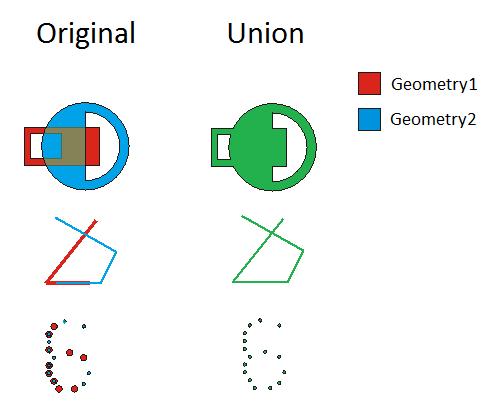// union many polygons
List<Coordinate3D> coordsZ = new List<Coordinate3D>()
{
new Coordinate3D(1, 2, 0), new Coordinate3D(3, 4, 1), new Coordinate3D(4, 2, 2),
new Coordinate3D(5, 6, 3), new Coordinate3D(7, 8, 4), new Coordinate3D(8, 4, 5),
new Coordinate3D(9, 10, 6), new Coordinate3D(11, 12, 7), new Coordinate3D(12, 8, 8),
new Coordinate3D(10, 8, 9), new Coordinate3D(12, 12, 10), new Coordinate3D(14, 10, 11)
};
// create polygons
List<Polygon> manyPolygonsZ = new List<Polygon>
{
PolygonBuilder.CreatePolygon(new List<Coordinate3D>(){coordsZ[0], coordsZ[1], coordsZ[2]}, SpatialReferences.WGS84),
PolygonBuilder.CreatePolygon(new List<Coordinate3D>(){coordsZ[3], coordsZ[4], coordsZ[5]}),
PolygonBuilder.CreatePolygon(new List<Coordinate3D>(){coordsZ[6], coordsZ[7], coordsZ[8]})
};
Polygon polygon = GeometryEngine.Instance.Union(manyPolygonsZ) as Polygon;
